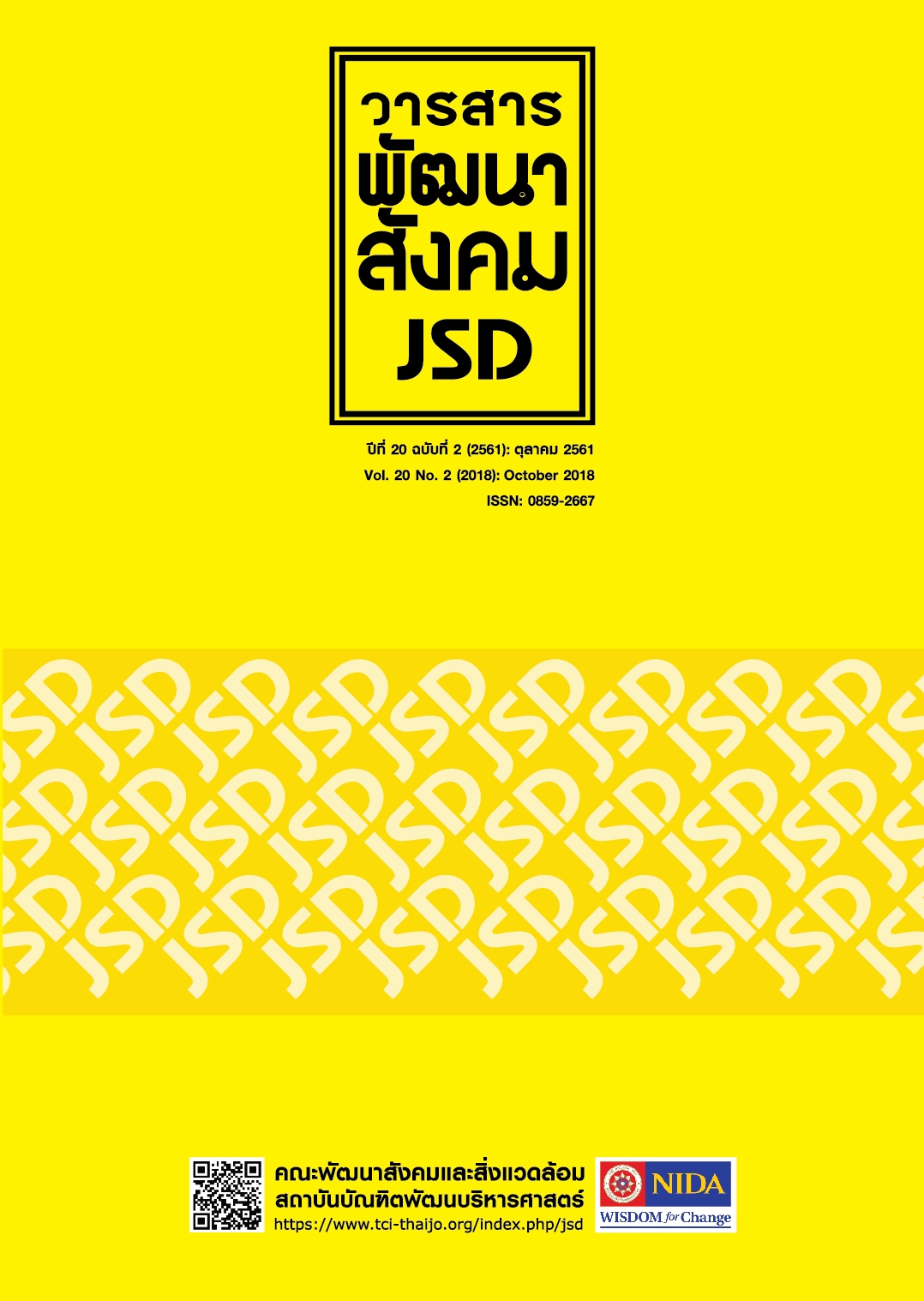Sufficiency and the New Theory applied to a One-Rai Plot of Land Generating an Income of 100,000 Baht.
Main Article Content
Abstract
The objectives of this research are to examine the process and successful application of the new theory to a one-rai plot of land generating an income of 100,000 baht and to explore the consistency of agricultural practices related to the application of the new theory with sufficiency economy. It employs qualitative research with participant observation, in-depth interview, focus group meeting, and case study analysis. The result indicates that the application of the new theory is consistent with sufficiency economy and the new theory. It improves and recovers agroecology, creating food security in household, knowledge transfer, network, and self-reliance. Recommendations are the promotion of building food security in small scale land, creation of farmer development, knowledge distribution, and establishment of an institute or organization to be responsible for the application of the new theory.
Article Details
References
Institute of Development Administration (NIDA). Vol.19 No.1/2017: pp. 2-21.
2. Bureau of Agricultural Development Policy and Planning. (2013). The Study on a Shortage of Agricultural Workers: a Case of Thailand’s Northeastern Region. Retrieved October 22, 2016 from http://www.oae.go.th/download/journal/2557/Shortageofagriculturalworkers.pdf.
3. Centre for Agricultural Information. Office of Agricultural Economics. n.d. Income Distributionand Poverty Among Agricultural Households. Retrieved October 22, 2016 from http:// infoservice.oae.go. th/ index. php/ households-m/ 122-income-socioeconomic-art.
4. Charoensawat, Natthon. (2014). “A One-Rai Plot of Land Generating an Income of 100,000 Baht” “Things” Common Heritage of Mankind. Simpleway Publishing: Kokaensan Company.
5. Inprom, Chayoot. (2016). Successful Applications of the New Theory to a One-Rai Plot of Land Generating an Income of 100000 Baht. Thesis. Ph.D. (Social Development Administration). School of Social and Environmental Development. National Institute of Development Administration (NIDA).
6. Kittichungchit, Manit. (2012). The Philosophy of Sufficiency Economy: a Balanced Way of Life. Bangkok: Kitangsorn Publishing.
7. Phengphinit, Thawatchai et al. (2011). Key Success Indicators of Sufficiency Economy from Village Scholars and Northeastern Multilateral Network. Suan Dusit Rajabhat University, SDRU Res.J. 7 (2), pp. 91-103.
8. Prachatai Newspaper. n.d. Retrieved March 2, 2017 from https://prachatai.com/journal.
9. Royal Development Project Coordination. Rice Department. n.d. Retrieved May 8, 2017 from https://m.facebook.com/945096145547368/photos/a.951795921544057.1073741829.945096145547368/1376292595761052/?type=3.
10. Samuketham. S. (2016). The Sufficiency Economy Philosophy and Urban Community Development: A Case Study of Rungmaniphathana Community in Bangkok Metropolis. Journal of Social Development. School of Social and Environmental Development. National Institute of Development Administration (NIDA). Vol.19 No.1/2017: pp. 40-58.
11. Sattayanurak, Utthachak. (2016). Better Life from “Farmers” to “Entrepreneurs”. Bangkok: Matichon Publishing.
12. Siamrath. (2016). The blindness of agricultural capitalism. Retrieved May 5, 2017 from: https://siamrath.co.th/n/4998.
13. Support and Research Coordination Division. Sustainable Agriculture Foundation (Thailand). 2004. Lessons and Experiences of the Sustainable Agriculture Development from Farmers and Community Organizations: A Pilot Project of the Sustainable Agriculture Development for Smallholder Farmers. Sponsored by the Ministry of Agriculture
and Cooperatives.
14. Suwanee Khamman. (2012). Towards a Sufficiency Economy: A New Ethical Paradigm for Sustainability.Research and Development Institute ofSufficiency Economy Philosophy Foundation (RSEPF).
15. Thammapiya, Priyanut. (2012). The 1997 Economic Crisis and the Philosophy of Sufficiency Economy. Bangkok: Project to Support the Sufficiency Economy Driven in Educational Institutions and to Young People. The Crown Property Bureau.
16. The Paika Division of the Digha Nikaya in the Sutta Pitaka (Royal Thai Edition) published in the Celebrations of the Auspicious Occasion of Her Majesty the Queen’s 60th Birthday Anniversary. 199. Vol.11: pp. 89-96. Suttas 120-130.
17. Thongphakdi, Natthaphong. (2007). The Philosophy of Sufficiency Economy: Its Background and Definition. NIDA Development Journal. Vol. 47 No. 1/2006: pp. 1-5.
18. Wichan, Badin. (2004). From Knowledge Management to Practical Wisdom. Bangkok: Expernet.


